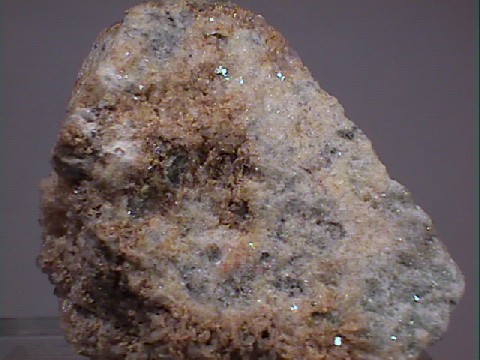 THE MINERAL CLINOHUMITE
THE MINERAL CLINOHUMITE
- Chemistry: Mg9(SiO4)4(F, OH)2, Magnesium Silicate Fluoride Hydroxide.
- Class: Silicates
- Subclass: Nesosilicates
- Group: Humite
- Uses: rarely cut as a gemstone and as mineral specimens.
Specimens
Clinohumite, like humite, is a member of the
Humite Group of minerals.
Members of the Humite Group are noted for having
a mixture of silicate layers and oxide layers in their structures.
The silicate layers have the same structure as
olivine.
The oxide layers have the same structure as
brucite.
Clinohumite has four stacked olivine layers that
alternate between the brucite layers.
The formula could be written as:
PHYSICAL CHARACTERISTICS:
- Color is yellow, red, brown or orange.
- Luster is vitreous to resinous.
- Transparency: Crystals are transparent to translucent.
- Crystal System: Monoclinic; 2/m.
- Crystal Habits include small prismatic to rounded crystals, but as is most commonly the case, as embedded indistinct grains. Lamellar twinning is common.
- Cleavage is poor in one direction, basal.
- Fracture is subconchoidal.
- Hardness is 6.
- Specific Gravity is 3.2 - 3.4
- Streak is white.
- Other Characteristics: Many specimens (usually those that are of a lighter color) fluoresce a yellow-orange color under shortwave UV light. Crystals are pleochroic from yellow to colorless.
- Associated Minerals include
humite,
talc,
geikielite , lazurite, dolomite and calcite. - Notable Occurrences include the type locality of
Mt. Vesuvius , near Napoles, Campania, Italy as well as the Pamir Mountains, Tadzhikistan, Russia; Pargas, Finland; Llanos de Juanar, Malaga, Spain; Tilly Foster Mine, New York; Fort Defiance, Apache County, Arizona; Crestmore Quarry, Riverside County and Lower Lake, Fresno County, California; Luna, New Mexico and Franklin, New Jersey, USA. - Best Field Indicators are color, associations, fluorescence, environment of formation and hardness.


